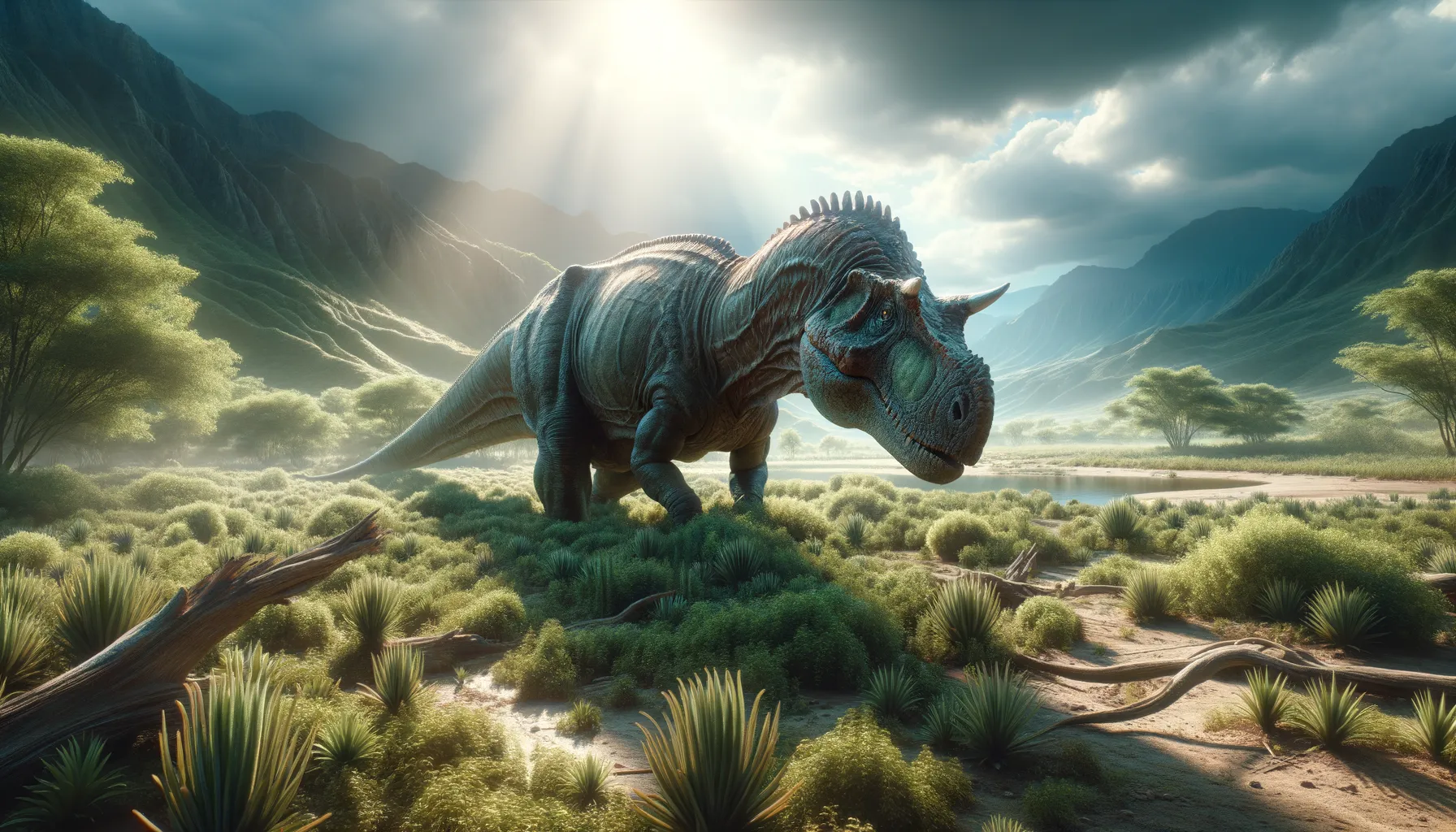
Gresslyosaurus
Graceful giant of the ancient Triassic.
Period
Triassic
Length
Around 5 to 6 meters long
Height
Around 2 meters tall
Weight
Approximately 600 to 700 kg
Gresslyosaurus was a large herbivorous dinosaur that roamed the earth during the Triassic period. Known for its robust body structure, it was a peaceful browser of ancient landscapes. Although initially identified as a dinosaur, later studies revealed it to belong to the prosauropod family, which were precursors to the more famous sauropods. It played a vital role in its ecosystem as a primary consumer.
Diet
Gresslyosaurus primarily fed on a variety of vegetation, such as conifers and ferns, which were abundant in its environment. Its long neck allowed it to reach higher foliage, giving it access to a broad range of plant material.
Hunting
Being a herbivore, Gresslyosaurus did not hunt. Instead, it foraged for plant material, spending much of its day feeding to sustain its large body size. It utilized its strong limbs to push through dense vegetation in search of food.
Environmental challenges
The climate during the Triassic period was generally warm and dry, with seasonal variations that could challenge Gresslyosaurus in maintaining a steady food supply. It had to adapt to fluctuations in vegetation density caused by these climatic changes. Competition for food with other herbivores in the area may have also posed a significant challenge.
Speed
Likely slow-moving
Lifespan
Estimated to be several decades
First discovery
Discovered in the early 19th century in Switzerland
Fun Facts
- Gresslyosaurus was named after Amanz Gressly, a Swiss geologist known for his work on strata.
- This dinosaur lived during the Late Triassic period, around 210 million years ago.
- Gresslyosaurus was a herbivore, munching on plants and vegetation.
- The first fossils of Gresslyosaurus were found in Switzerland, showcasing ancient life in Europe.
- Despite its name, Gresslyosaurus wasn't initially recognized as a dinosaur! It was once considered to be a type of giant, ancient reptile.
- Many scientists believe Gresslyosaurus may have been closely related to an early type of dinosaur known as Plateosaurus.
- Gresslyosaurus had a long neck, which helped it reach vegetation that other dinosaurs couldn't.
Growth and Development
Gresslyosaurus likely experienced rapid growth during its juvenile years to reach a substantial size, which offered some protection against predators. It used this growth advantage to access a wider range of plant food available to larger herbivores. Fossil evidence of bone structure suggests it could have experienced growth spurts at various developmental stages.
Habitat
Gresslyosaurus thrived in open woodland areas close to water sources, which were necessary for its survival. These landscapes supported ample vegetation, vital for its herbivorous diet. It likely inhabited regions with a mix of dense underbrush and taller flora, ideal for its feeding habits.
Interaction with other species
Gresslyosaurus likely coexisted with a diverse range of species, including both herbivorous and carnivorous dinosaurs. It may have formed herds for social interaction and protection against predators. Cooperative behavior among individuals might have helped them navigate through their challenging environment.
Natural lifespan
Gresslyosaurus likely had a natural lifespan of several decades.
Reproduction
Reproduction likely involved layi ng eggs in nests which were protected until hatching. The species might have demonstrated some level of parental care, typical of many early dinosaur species. Fossilized eggs offer insights into its reproductive strategies.
Social behaviour
Gresslyosaurus is believed to have exhibited social behavior, potentially moving in groups for protection and efficient foraging. This herd behavior would have helped reduce individual vulnerability to predators. It may have engaged in communication similar to that of other herd animals.
Fossil locations
Fossils of Gresslyosaurus were primarily found in Switzerland, helping paleontologists to paint a picture of its existence in Europe during the Triassic. These locations indicate that it lived in a habitat conducive to fossild preservation, where sediment and water systems favored fossilization.
